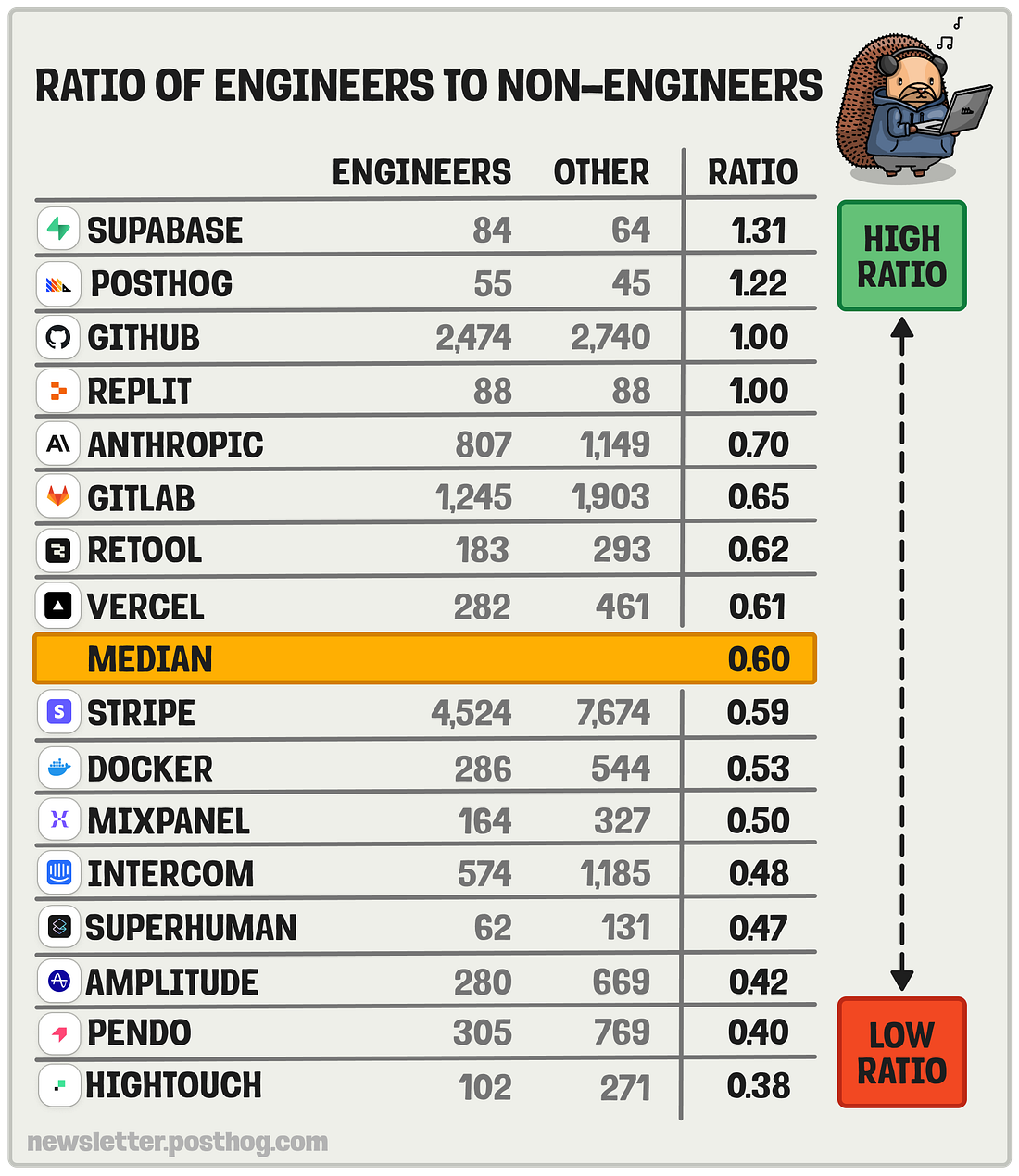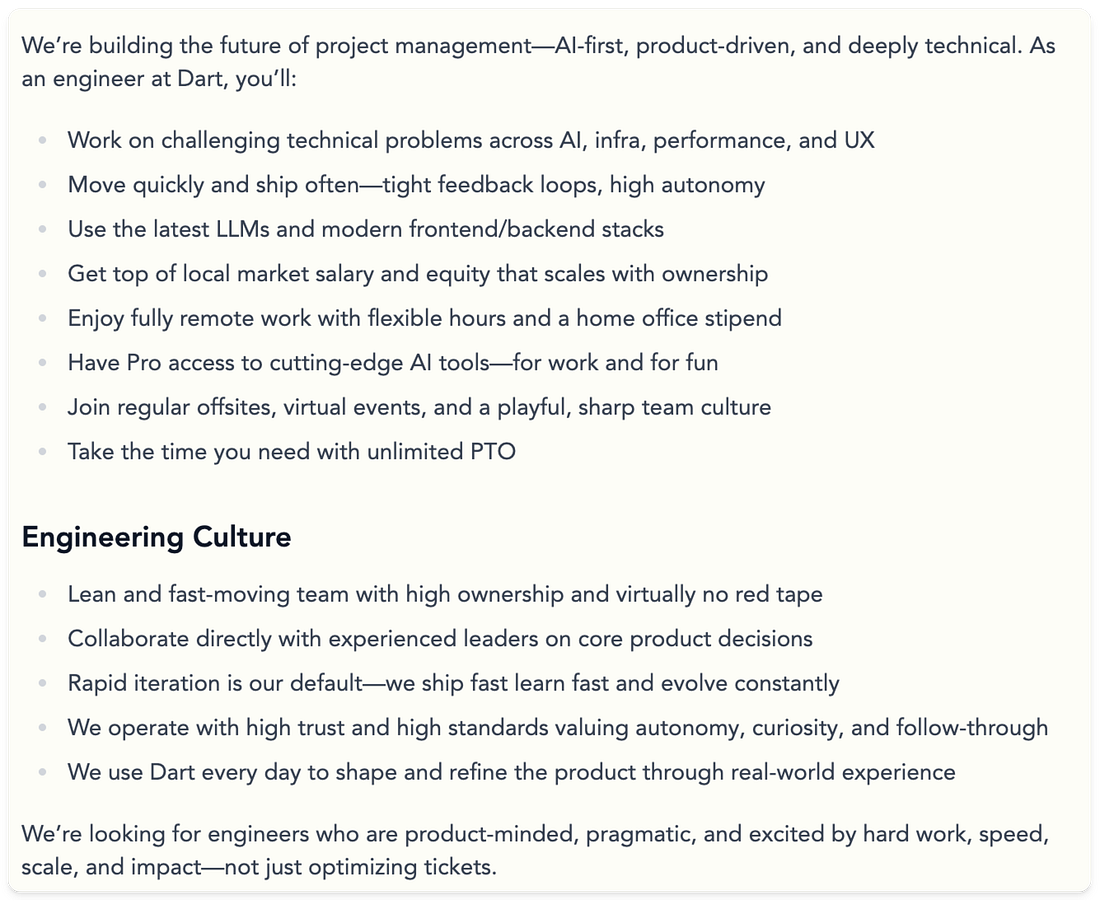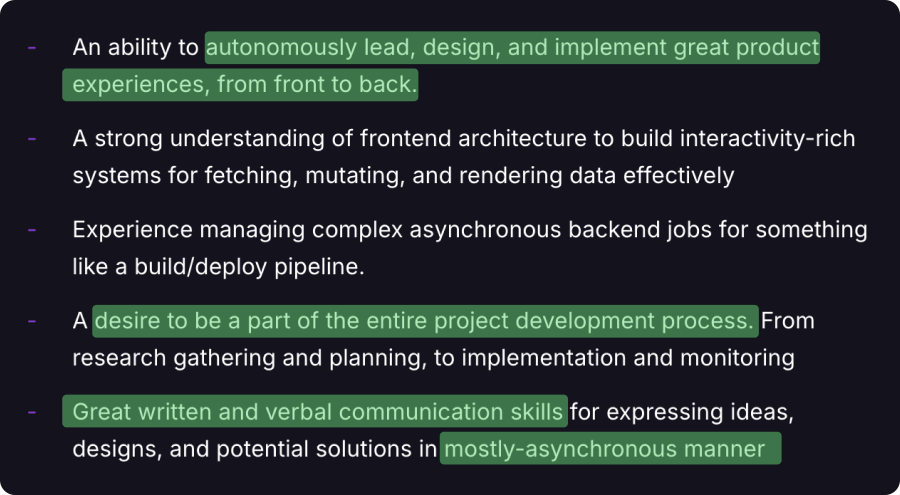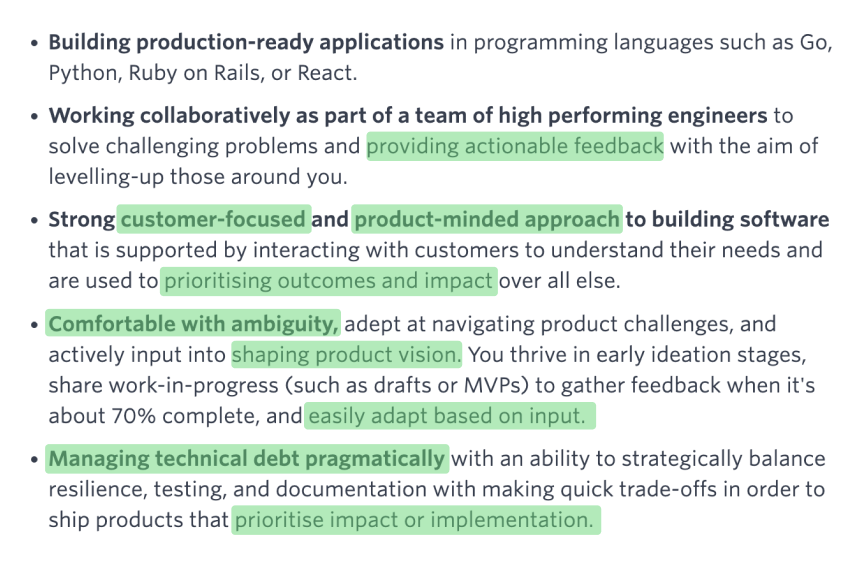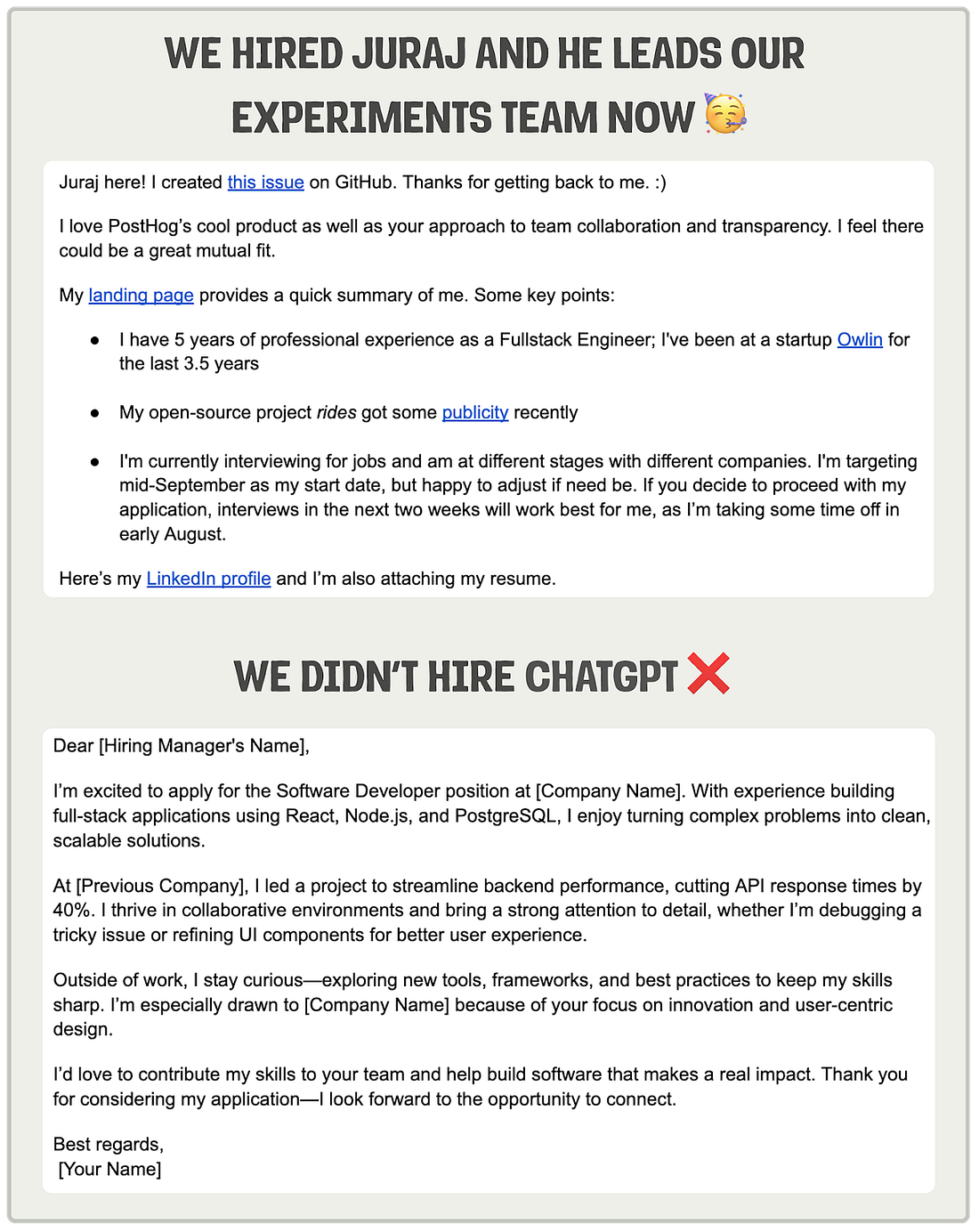Finding a job as a product engineer
Regular readers know we're big believers in product engineers – it's literally the point of this newsletter. We define this as someone who:
We see first hand how developers who work like this deliver amazing results. They ship faster, spark joy in customers, and have a lot of fun doing so. It's satisfying. That's the good news. The bad? Product engineer roles are harder to find and harder to win. You have to be cracked. You have to really want it and you need to know where to look.
1. Choosing the right companiesThis is harder than it sounds. Typing "companies that hire product engineers" into Google doesn't work. ChatGPT has some smart suggestions, but it will only get you so far. None of these points are universally true, but here's what we'd look for:
Red flags
2. How and where to find themYou're unlikely to find these companies and their open roles on Indeed. The obvious place to start is Y Combinator's Work at a Startup job board – it's the largest and most well-known startup accelerator the culture of YC is inherently product-engineer friendly. When searching, do the following:
Now experiment with a few search parameters that communicate the values we want, such as:
This will help narrow down your search to roles and companies that are looking for product engineer-style people. Pay attention to how much detail companies add to their profiles. Most will include a basic bio of the founders, what they're building, and their tech stack; the really good ones will go into the detail about the type of company they want to build.
Other companies may have this kind of context on their careers website, or in their ads, but many don’t. Fostering a product engineering culture requires intent. Anyone with intent should want to tell people about it. Other places to look
3. Reading between the linesHere's the next problem:
You need to learn to read between the lines based on what companies include in their ads, and on their career pages. Exhibit #1 is a role for a Senior Full-Stack Engineer - Product at Railway. It doesn't use the product engineer title, but its website and ads are packed with good signs. This bullet point from the "About the role" section stands out:
This is a great summary of what product engineers do. Own the idea and execution, but also following through and owning its success. The "About you" section (below) backs this up and emphasises on the need to "lead autonomously" and work in a "mostly-asynchronous manner". Railway has clearly thought deeply about how to communicate what it wants, so tip-of-the-hat to them. Incident.io nails the key points, too. I particularly love the focus on interacting with customers, and navigating ambiguity – a vital quality for any product engineer.
It's not just early-stage startups that want product engineers. Intercom’s career pages emphasize shipping fast, agency, autonomy, and “full ownership of what we build from beginning to end." An interesting contrast is Vercel, which advertises some roles as "product engineer", but mostly focuses on technical requirements. In these situations, a little due diligence using Glassdoor (if you can tolerate the UX) and Blind can help you research the culture. Remember, too, that culture can vary from team-to-team in larger companies, so it becomes more about asking good questions at the interview stage, like:
4. Increasing your oddsYou need to think like a recruiter. You may spend hours, days even, researching a company, crafting a cover letter, resumé, and so on, but even mid-sized startups get hundreds of applications. We typically average one minute per application review, but this is just an average. Some applications can be dismissed in seconds, which gives us time to spend five to 10 minutes reading the really good ones. Your goal is to be in the 5 to 10-minute cohort. You can increase your odds by: a) Writing a short and obviously personalized cover letter
Not writing a cover letter might work for bigger companies that are hiring at a huge scale, but not submitting one (especially if asked) just gives a recruiter a reason to ignore you. b) Keeping your resumé simple and up-to-date
c) Showing your product engineer credentials
The more of these things you do, the more likely your application will get 10 minutes, rather than 10 seconds, of someone’s attention. Further reading: 🧠 Things we’ve been feeding our brains with
1 Figuring this out isn’t straightforward. If you pay for LinkedIn Premium, you can look up the spread of roles at a company via the “Insights” tab on a company’s page. This data isn’t perfect, but it is directionally useful. 2 Here’s a quick sample from engineers at Posthog for inspiration:
|
Similar newsletters
There are other similar shared emails that you might be interested in:

